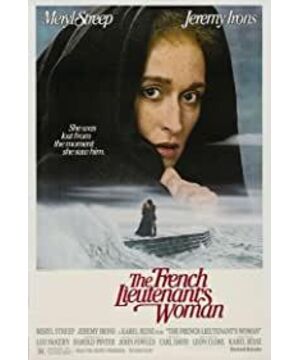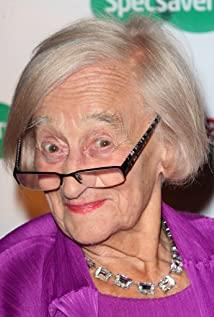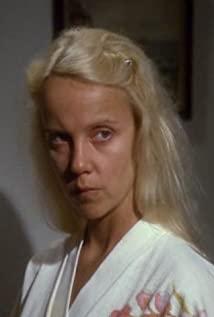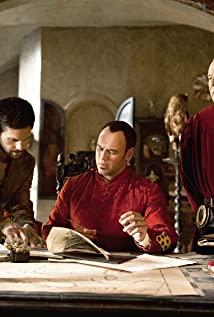"It's a Victorian love story and an excavation of the fossils of social life at the same time. It's about love, and it's about individuals in society; it's about history, and it's about reality."
Whether as an adaptation of a famous novel or as a film with a layered structure, "The French Lieutenant's Woman" provides a new visual narrative template, rich in narrative rhetoric and the mystery of love. The restatement of the book is full of a huge tension of historical transcendence - "Any kind of liberation is to give back the world and the relationship of man to himself". The brilliance of modernism in Fowles' original works, the presence of a narrator, giving characters to individual lives with freedom of existence that are not controlled by others, setting three possible endings, and many other innovative openings are all for film and television. The adaptation intensifies the difficulty. "Any personal statement and reflection about history and history can only be a 'fragment' of history: a re-statement and reflection of cultural representation and narrative discourse. It is not history itself that is 'represented', but It can only be the presentation of media and representational narratives in history.” So this is a story about the principles of Victorian narrative, and the novel's singular allure lies in its narrative style and the tension of meaning between the two discourses (Victorian and modern), so it seems that The French Lieutenant The video adaptation of "The Woman" was undoubtedly a success.
In order to fully demonstrate the narrative principles in Fowles' original work (the tension of meaning between Victorian narrative conventions and modern narrative methods), "The French Lieutenant's Woman" adopts a typical "layer structure" mode, using a The structure of the play within the play and the film within the film completes a juxtaposition of a Victorian and modern love story, the mirror image of the same pair of actors, and the self-identification lost in the constant rehearsal. "Man is not a prisoner of the social contract or a hostage of history, an individual who always has autonomy, but is only a prisoner of himself and his soul." Like the lost dance director in Saura's "Carmen", Mike plays the role of Charles In the process, he also confuses reality and fiction, and confuses Anna and Sarah (Mike's love for Anna is only to chase the shadow of Sarah who Anna is attached to), so that possession in the true sense can never be achieved. For this reason, the director may have provided the ending of the comedy to the story of the Victorian era, but the original tragic ending of love was given to "modern lovers who seem to have all the rights to freedom", to show a kind of love and the right to speak in history. Eternal confusion beyond.
Compared with the presentation of the narrative techniques that have long been deeply rooted in the original work, the success of video adaptation lies more in the design of visual language and paragraph composition. The composition of the picture presented in the Victorian era and the modern era is completely symmetrical and opposite to the picture (mind) shared between the characters: Sarah and Charles are presented in the story as a process of constant approaching and finally interdependent integration, while Anna and Mike's modern feelings are externalized as a process of divorce from near to far, from inside to outside. In the play, Sarah used her weak identity to fill in a lie waiting for the conscious rescue of men, and used a self-inflicted loneliness and freedom to lure Charles' intrusion. Mike, who plays Charles, is unmistakably drawn to Sarah on/off-screen to the point of bewildering the ego in false assignments and chasing the other in fantasy complements.
The charm of Fowles' original novel is undoubtedly that the meaning/character of its characters is not single and precise, and the rich characters and complex psychology contained in the characters even go beyond the conceptual definition of "round characters". The author is only responsible for presenting the appearance rather than taking on the perspective of God, and provides an authoritative textual interpretation of the characters in the pen. Therefore, Sarah will always be a mystery, a mystery about human beings that transcends the love between men and women. It is difficult to crack, and there is no correct ending to save her. However, the meaning of Sarah (or Anna) in the film is far more pure and clear than the original - a woman who is placed under the definition of classic patriarchy, a woman who is within the scope of male vision. Sarah is an enigmatic woman, but she is just an enigmatic "woman", sad and mysterious, and she does everything she can just to get the love of men to save her. Especially at the end, Sarah is given a motivation not found in the original: actively looking for Charles instead of letting Charles be told by a guilty servant. This is an intensified meaning, and although it can be said that it is a simplification of characters due to video adaptation, this unconscious simplification is also a conservative stereotype. If it is placed in today's adaptation, perhaps Sarah's meaning will be richer, and the camera can also break the omniscient limitation of God's perspective, take on the task of free indirect speech, and use the image itself to present mystery, present choices, and bring a new vision. feast.
View more about The French Lieutenant's Woman reviews











